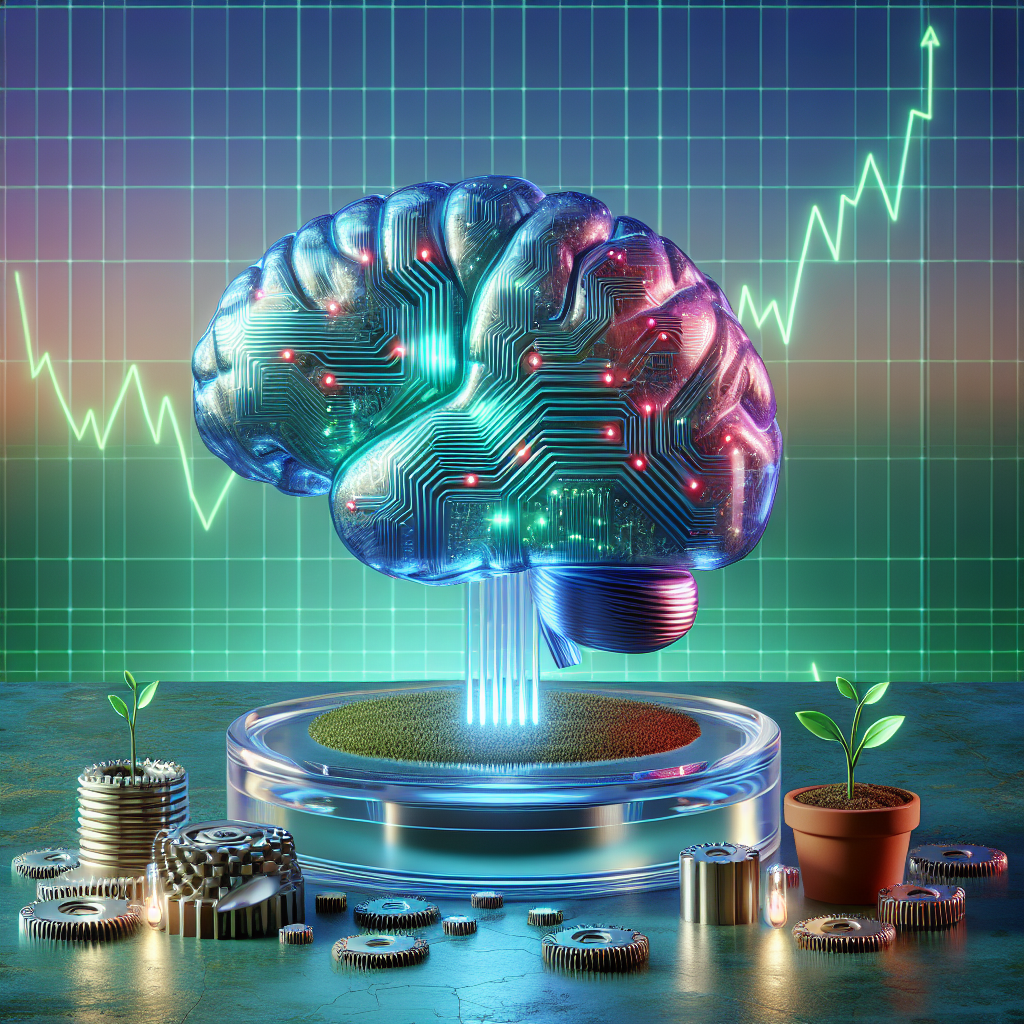In today’s fast-paced business environment, companies are constantly searching for innovative solutions to maintain a competitive edge. One transformative tool making significant strides in this arena is agentic AI—a subset of artificial intelligence designed to automate complex tasks, enhance decision-making processes, and drive innovation across various sectors. This blog post explores how businesses can leverage agentic AI applications for growth and competitive advantage while also discussing strategies for successful implementation.
Introduction
Artificial Intelligence (AI) has become a cornerstone of modern business strategy, offering organizations powerful tools to streamline operations, boost efficiency, and foster creativity. Among the diverse types of AI available today, agentic AI stands out due to its ability to act autonomously, making decisions and executing tasks without human intervention. By integrating agentic AI applications into their operations, businesses can unlock new avenues for growth and innovation.
According to Gartner Inc., companies are increasingly adopting AI-driven models to gain a competitive edge. The tech hub of Silicon Valley has been at the forefront of these advancements, with industry leaders like OpenAI pioneering groundbreaking developments in AI technologies. In this article, we’ll delve into how agentic AI can be harnessed for business growth and innovation.
Understanding Agentic AI
What is Agentic AI?
Agentic AI refers to systems capable of autonomous action, performing tasks, and making decisions with minimal human input. These advanced systems are designed to understand context, learn from interactions, and adapt their actions accordingly. Unlike traditional automation tools that execute predefined instructions, agentic AI applications can evaluate new information in real-time, enabling dynamic responses.
Key Benefits
- Operational Efficiency: Implementing agentic AI solutions can significantly enhance operational efficiency by automating routine tasks. This allows businesses to free up valuable human resources for more strategic initiatives.
- Enhanced Decision-Making: Agentic AI systems analyze vast datasets to provide insights that drive informed decision-making, helping companies make smarter business choices.
- Innovation and Creativity: These advanced AI applications can identify patterns and generate novel solutions, fostering creativity within organizations. Businesses are increasingly adopting AI-driven models to foster creativity and competitive advantage through innovation.
Business Growth Strategies with AI
To fully leverage agentic AI for business growth strategies with AI, companies need a clear plan that aligns technology goals with business objectives. This involves identifying key areas where automation can bring value, such as customer service, supply chain management, or data analysis. Implementing artificial intelligence solutions in these areas can result in increased efficiency and cost savings.
Identifying Opportunities for Agentic AI
Start by conducting a thorough assessment of your current operations to pinpoint pain points that could benefit from automation. Evaluate processes that are repetitive, time-consuming, or prone to human error. By automating such tasks with agentic AI applications, organizations can significantly enhance operational efficiency and reallocate resources more effectively.
Real-World Use Cases
Consider how agentic AI has transformed industries like retail, where personalized shopping experiences are crafted using consumer data analysis. In healthcare, AI tools assist in diagnosing diseases faster than traditional methods while personalizing treatment plans based on patient history. These examples illustrate the tangible benefits of implementing artificial intelligence solutions.
Implementing Agentic AI
Successful implementation begins with setting clear goals and selecting appropriate technologies that align with business objectives. It’s essential to foster a culture open to innovation, encouraging employees to embrace new ways of working. Training programs should be established to equip teams with necessary skills, ensuring smooth integration into existing processes. Moreover, robust data governance policies must be in place to manage the vast amounts of information processed by these systems.
Innovation Through AI Tools
Innovation through AI tools goes beyond mere automation; it involves rethinking how businesses operate and deliver value to customers. By leveraging agentic AI applications, companies can develop new products or services, enter unexplored markets, and optimize existing offerings for better customer satisfaction.
Driving Customer Experience
Agentic AI enables hyper-personalization by analyzing customer behavior patterns in real-time. This capability allows organizations to tailor their interactions based on individual preferences, resulting in more meaningful engagements and increased loyalty.
Enhancing Product Development
With access to predictive analytics and trend analysis tools powered by agentic AI, businesses can anticipate market demands before they arise. Such foresight helps in designing products that not only meet current needs but also align with future consumer expectations.
Real-World Applications of Agentic AI
Industries across the board are reaping benefits from implementing agentic AI applications:
- Retail: Companies use AI for personalized shopping experiences, optimizing supply chains, and improving inventory management.
- Healthcare: AI tools assist in diagnosing diseases, personalizing treatment plans, and managing patient data efficiently.
- Finance: Financial institutions employ AI to enhance fraud detection, automate customer service, and improve investment strategies.
- Manufacturing: Agentic AI applications streamline production processes, predictive maintenance reduces downtime, and enhances product quality.
Case Study: Manufacturing Industry
In the manufacturing sector, companies like General Electric (GE) have adopted agentic AI solutions for predictive maintenance. By analyzing sensor data from machinery in real-time, GE can predict equipment failures before they occur, reducing unplanned downtime and optimizing repair schedules. This proactive approach not only saves costs but also improves operational efficiency significantly.
Case Study: Financial Services
JPMorgan Chase has implemented an AI-driven contract analysis system that processes documents faster than a team of lawyers could. By employing agentic AI applications in legal document processing, the bank enhances accuracy while reducing time and labor costs associated with manual reviews.
Challenges and Considerations
While adopting agentic AI offers numerous advantages, companies must navigate several challenges to ensure successful implementation:
- Data Privacy: Ensuring compliance with data protection regulations like GDPR is crucial when handling sensitive information.
- Ethical Concerns: Organizations need to address potential biases in AI algorithms that could lead to unfair treatment or discrimination.
- Scalability: Systems should be designed to scale with the growing volume of data and increasing complexity of tasks.
Conclusion
Agentic AI stands as a game-changer for businesses seeking growth and innovation. By automating tasks, enhancing decision-making, and driving creativity, these AI applications provide companies with the tools needed to stay competitive in today’s dynamic marketplace. As more organizations adopt agentic AI solutions, they unlock new possibilities for efficiency, customer satisfaction, and long-term success.
Are you ready to harness the power of agentic AI for business growth and innovation? Our cutting-edge AI Agentic software development and AI Cloud Agents services can help your company implement these transformative technologies effectively. We’ve successfully assisted organizations across various industries in adopting similar solutions, driving substantial improvements in operational efficiency and competitive positioning.
Our team offers personalized consultations to tailor our AI solutions to your specific needs. By leveraging the insights shared in this article, we can develop a strategic plan that maximizes the benefits of agentic AI for your business. Contact us through our contact page or use the forms on our website to schedule a consultation. We’re more than happy to address any questions and provide assistance throughout the implementation process.
Embrace the future with confidence—let us help you unlock the full potential of agentic AI today!



